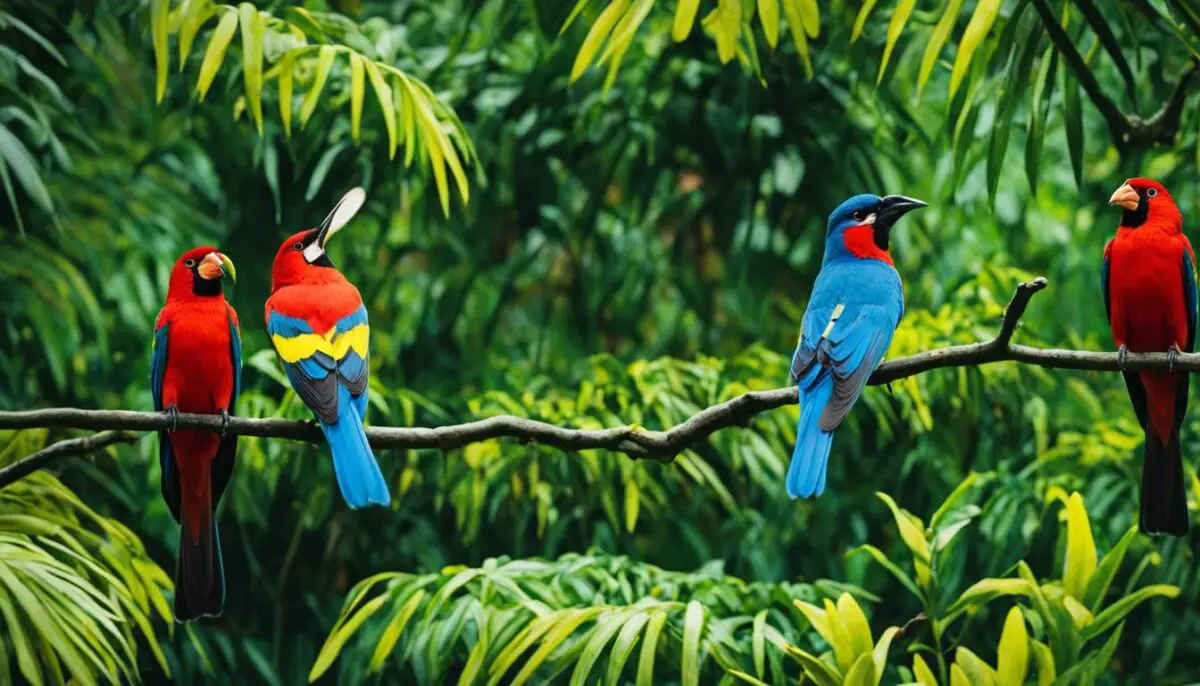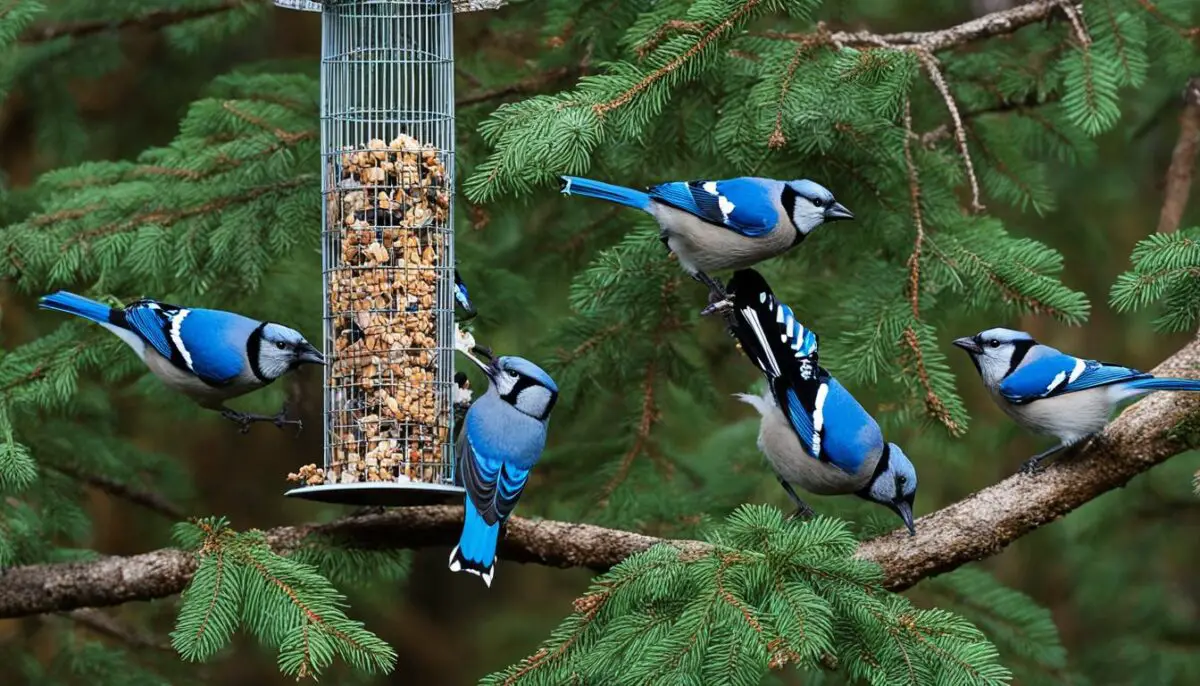Welcome to the fascinating world of bird mating season! Have you ever wondered when birds engage in their courtship rituals and breeding behaviors? In this article, we will explore the timing of the bird breeding season, the various behaviors exhibited by birds during this exciting period, and the factors that influence their reproductive cycles.
Every year, birds go through a unique and instinctual process of breeding in order to procreate and ensure the survival of their species. The bird mating season occurs annually, independent of location, climate, and species. However, the timing of this season may vary depending on several factors.
Usually, bird mating season takes place during the spring when there is an abundance of food and warmer temperatures. This period provides the ideal conditions for birds to court, mate, and raise their young. It is during this time that you may notice changes in plumage, increased territorial behavior, and a delightful increase in bird songs.
Understanding the breeding behavior of birds and their mating habits is not only fascinating but also crucial for their conservation and protection. By respecting their needs and giving them space during their courtship and nesting periods, we can contribute to the well-being of these remarkable creatures.
Key Takeaways:
- Bird mating season occurs annually and is independent of location, climate, and species.
- The breeding season usually takes place during spring when there is an abundance of food and warmer temperatures.
- Signs of the breeding season include changes in plumage, increased territorial behavior, and an increase in bird songs.
- Understanding bird mating habits and respecting their needs contributes to their conservation and protection.
- Observing bird courtship and nesting behaviors can be a rewarding experience, so remember to give them space and enjoy the wonders of nature!
Factors Influencing Breeding Season
The breeding season for birds is influenced by several factors that shape their mating rituals and annual patterns. These factors include the species of the bird, its geographic location, the availability of food, water, and suitable nesting locations.
Different bird species exhibit unique mating rituals and patterns during their breeding season. For example, some species engage in elaborate courtship displays that involve colorful plumage, intricate dances, and melodious songs. These rituals serve to attract mates and establish breeding territories.
“Birds, as a diverse group, have evolved a variety of fascinating and intriguing mating rituals. From the flamboyant courtship dances of birds of paradise to the sky-high aerial displays of raptors, the world of bird mating is rich with wonder and beauty.”
The timing of the breeding season is also influenced by the availability of food and water. Birds tend to breed closer to areas with abundant food supplies, ensuring a steady source of nourishment for themselves and their offspring. Similarly, the proximity of nesting locations to water sources is crucial for birds that rely on aquatic habitats for feeding.
The number of broods and the location of nesting can also affect the timing of the breeding season. Some bird species produce multiple broods within a single breeding season, while others may only have one. Additionally, the availability of suitable nesting locations, such as tree cavities, burrows, or dense foliage, influences when and where birds choose to breed.
Annual Bird Mating Patterns
Annual bird mating patterns vary across species and geographical regions. While some birds strictly adhere to a specific breeding season each year, others have more flexible mating patterns that respond to environmental cues and resource availability.
For instance, certain bird species in temperate regions breed during the spring and summer months when temperatures are warmer and food sources are abundant. This is often referred to as the “peak mating season for birds.” These birds synchronize their reproductive activities with the availability of resources, ensuring the highest chances of survival for their offspring.
In contrast, birds in tropical regions may not have a well-defined breeding season. Instead, they may breed opportunistically throughout the year when conditions are favorable and food resources are plentiful.
Understanding the factors that influence bird breeding season and the annual patterns of different species is key to appreciating the remarkable diversity of bird mating rituals and behaviors.

Factors Influencing Bird Breeding Season
| Factors | Description |
|---|---|
| Species | The specific bird species and its biological characteristics |
| Geographic Location | The region or habitat where the bird is found |
| Food Availability | The abundance of food sources in the area |
| Water Availability | The presence of nearby water bodies |
| Nesting Locations | The availability and suitability of nesting sites |
| Number of Broods | The frequency at which birds produce offspring within a breeding season |
Breeding Behavior of Great Horned Owls and Bald Eagles
When it comes to early nesting and remarkable chick development, Great Horned Owls and Bald Eagles are certainly worth exploring. These magnificent birds exhibit fascinating breeding behaviors that contribute to their survival and the continuation of their species.
Great Horned Owls: Nesting and Early Breeding
Great Horned Owls are known for their impressive ability to adapt to various environments, including forests, deserts, and even suburban areas. These owls start nesting early in the year, typically selecting different locations for their nests, such as tree cavities or abandoned nests of other birds. Nesting early allows them to give their chicks more time to develop their hunting skills before spring arrives, ensuring their successful integration into the ecosystem.
In the table below, we can see the development milestones of Great Horned Owl chicks:
| Week | Chick Development |
|---|---|
| 1 | Feathers start to grow |
| 2 | Eyes open, start moving within the nest |
| 3 | Feathers fully grown, start exploring outside the nest |
| 4 | Begin practicing hunting techniques under the parents’ guidance |
These milestones highlight the rapid development and growth that Great Horned Owl chicks undergo, preparing them for independent adult life.
Bald Eagles: Early Nesting and Shared Responsibilities
Bald Eagles, one of the most iconic and majestic birds of prey, also exhibit early nesting behaviors, particularly noticeable in regions like Florida. They are strategic in their timing, taking advantage of the region’s dry season and the availability of abundant fish and waterfowl.
What makes Bald Eagles even more remarkable is their cooperative nesting and parenting approach. Both male and female eagles share the responsibilities of nest-building and chick rearing. After successfully hatching, the young eagles, known as eaglets, remain with their parents through the summer. During this time, they continue to develop their hunting skills and learn essential survival techniques.

To summarize, Canada Jays and Crossbills exhibit remarkable nesting behavior that allows them to thrive in harsh conditions. While Canada Jays rely on caching behavior to store food and sustain their young during the cold months, Crossbills time their nesting based on the availability of conifer seeds. Understanding and appreciating the unique adaptations of these birds enhances our admiration for their resilience and highlights the remarkable ways nature enables species to survive.
Nest Defense Tactics
Birds are known for their remarkable strategies to protect their nests and ensure the safety of their offspring. Whether it’s defending against potential predators or guarding their territory, these fascinating creatures employ various tactics to maintain the security of their nests.
One common defensive behavior observed in birds is dive bombing. Species like mockingbirds and beach nesting birds such as terns and gulls perform precise aerial maneuvers, swiftly swooping down on intruders to scare them away. This aggressive tactic not only deters threats but also sends a clear message that the nest is off-limits.
Another interesting defense mechanism employed by certain bird species is the broken wing display. Birds like killdeer and plovers have mastered the art of deception by feigning injury to distract predators from their nests. They flutter away from the nest, dragging a wing as if it were broken, diverting attention and protecting their vulnerable offspring.
It is crucial for humans to be aware of these nest defense behaviors and respect the space required by nesting birds. Approaching nests can cause unnecessary stress and disturbance, potentially leading to nest abandonment or harm to the chicks. By giving nesting birds the space they need, we can contribute to a successful breeding season and the preservation of bird populations.
Now let’s take a closer look at some remarkable examples of nest defense tactics used by different bird species:
| Bird Species | Defense Tactic |
|---|---|
| Mockingbird | Dive bombing |
| Terns and gulls | Dive bombing |
| Killdeer | Broken wing display |
| Plovers | Broken wing display |
Mockingbirds: Masters of Dive Bombing
“Mockingbirds are highly territorial and become extremely protective of their nests during the breeding season. If an intruder approaches their territory, they will swoop down in rapid succession, repeatedly dive bombing the intruder until it retreats. Their aerial acrobatics and aggressive behavior make them formidable nest defenders.”
Killdeer and Plovers: Masters of Deception
“Killdeer and plovers employ a clever tactic known as the broken wing display to protect their nests. When a predator encroaches on their nesting area, they feign injury by dragging a wing on the ground, simulating vulnerability and drawing the predator’s attention away from their nest. Once the predator is sufficiently distracted, they quickly fly away, leaving the predator confused and giving their chicks a chance to remain safe.”
Conclusion
The bird nesting season is a captivating time that offers a glimpse into the fascinating world of bird behavior and courtship rituals. During this period, birds engage in various breeding behaviors, such as territorial displays, elaborate mating dances, and intricate nest building.
The timing of the bird nesting season is influenced by multiple factors, including species-specific characteristics, geographic location, and the availability of essential resources like food and nesting sites. By understanding these influences, we can gain a deeper appreciation for the intricate balance of nature and the importance of conservation efforts.
Conserving bird populations is vital for maintaining healthy ecosystems. By respecting and protecting their nesting habitats, we can ensure the survival and well-being of countless bird species. Let us all enjoy the wonders of the bird nesting season while actively contributing to the ongoing efforts in bird conservation.
FAQ
When does the bird mating season occur?
The bird mating season occurs annually during spring when there is an abundance of food and warmer temperatures.
What are the signs of the breeding season?
Signs of the breeding season include changes in plumage, increased territorial behavior, and an increase in bird songs.
What factors influence the breeding season for birds?
The breeding season for birds is influenced by factors such as the bird species, geographic location, availability of food, water, and nesting locations.
How do Great Horned Owls and Bald Eagles differ in their breeding behavior?
Great Horned Owls nest early in the year to give their chicks more time to develop their hunting skills before spring. Bald Eagles also nest early, especially in Florida, to take advantage of the region’s dry season and an abundance of fish and waterfowl.
What is the nesting behavior of Canada Jays and Crossbills?
Canada Jays start nesting as early as February in the Boreal Forest, relying on their caching behavior to store food for the winter months. Crossbills are opportunistic breeders and will nest based on the availability of conifer seeds.
How do birds defend their nests?
Birds employ various nest defense tactics, such as dive bombing and broken wing displays, to scare off threats and distract predators from their nests.
Why is it important to be mindful of bird nesting behaviors?
Understanding bird nesting behaviors and respecting their needs can contribute to the conservation and protection of bird populations.


